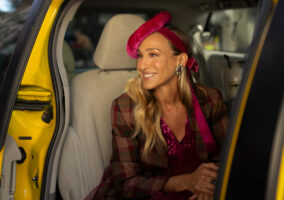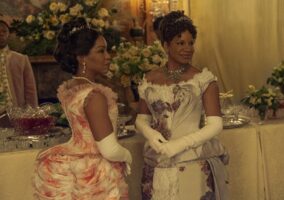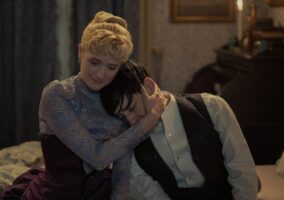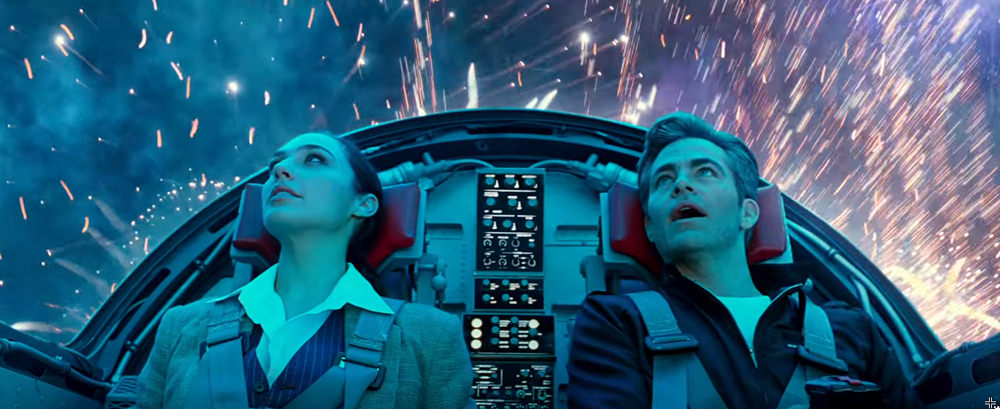
Wonder Woman 1984, the long-awaited, much delayed follow-up to 2017’s Wonder Woman, is fun, flawed, and just the kind of comfort watch you might need as you sit through this holiday season. Director Patty Jenkins is back to guide Diana Prince’s story and she’s crafted a bit of a throwback film as well as a love letter to its main character and her long (and largely unexplored outside of comics) mythos.
Trite as the phrase may be, it’s a film that’s full of heart; an old-school throwback to ’80s adventure films that borrows its tone (and a few of its scenes) from the first two Christopher Reeve Superman films, largely due to star Gal Gadot’s Reeve-ian ability to radiate an uncomplicated inner light, avoiding corny-ness by sheer force of charisma. Jenkins and Gadot try their best to give the audience triumphant moments like the first film’s much-praised “No Man’s Land” sequence and to their credit, there are several times where Diana’s power and purity of purpose gets a chance to dazzle the audience and lift the spirits. There’s an opening flashback to Diana’s childhood that allows Jenkins to indulge a bit more in showing life for the Amazons of Themiscyra, in a sequence that had Tom excitedly saying to Lorenzo, “This is what Wonder Woman should always be! Lord of the Rings, but everyone’s a woman!” But as much fun as the candy-colored world of 1984 can be as a backdrop, it doesn’t have nearly the weight or epic feel of being on the front lines of World War I and ultimately, this sequel doesn’t quite reach the heights of its predecessor.

The story meanders and there are decent chunks of it where confusion and vagueness reign. The third act suffers from a lot of speechifying and gesturing rather than offering a true action set piece. The stakes are oddly defined and the McGuffin that sets off the story is absurd even for a comic book movie. Jenkins seems to want to go back to a more simplified sort of adventure than the overblown decade-long stories of the Marvel cinematic universe, but she seems to have over-corrected to the point that there doesn’t seem to be much of a reason for the story and almost nothing in the way of an explanation – not just for what happens, but for why all of the characters act the way they do. Pedro Pascal is seriously miscast as a sweaty huckster con man with more than a bit of 1980s Trump to him. His natural charm is hidden under a blond wig and a lot of empty speechifying about wanting power with no real exploration as to why. His motivations remain thin and barely sketched through the whole film. In fact, any time the film gets away from Diana and Steve, the motivations and explanations grow thin and vague. The item (because there’s always an item) that sets the story into motion is about as unexplained as humanly possible while still being able to hang a story on it: a magical, mysterious stone that grants wishes monkey’s paw-style. Why is Chris Pine’s Steve Trevor alive 70 years after his death? A magic rock. Why does Kristen Wiig’s Barbara (who’s great in the early scenes but loses focus as the script seems to forget about her for stretches) go from being a nerdy nobody to a sexy “apex predator” who can go toe to toe with the Amazon princess and leave her in a bloody heap? A magic rock. Why is the world in danger of tearing itself apart? A magic rock. Why is Diana losing her powers? You guessed it: magic rock. It’s the only explanation you get and it’s meant to explain the entire film.
In the first film, the romance between Diana and Steve unfolded naturally, playing off the natural chemistry between Gadot and Pine without overwhelming the story, which was largely about things other than Diana’s feelings for Steve. The second film’s emotional core is entirely about the romance, which is disappointing. All of Diana’s actions and sentiments arise out of her love of Steve after what we’re told is nearly seven decades of pining for him. This is sometimes hard to accept when it’s brought up; especially since it’s been even longer since she’s seen her mother or any of her people. Diana would have good reasons to feel lonely in the world, but the film only lets her express one want, one ache – and it reduces her a bit as a character. What was so great about her Diana in the first film was that she strode through the world completely untouched by gender expectations. Of course she should be written as a fully realized person, but having her sole character trait be a seven-decade mourning period for a guy she knew for a week or two is a disappointing creative choice, to say the least.
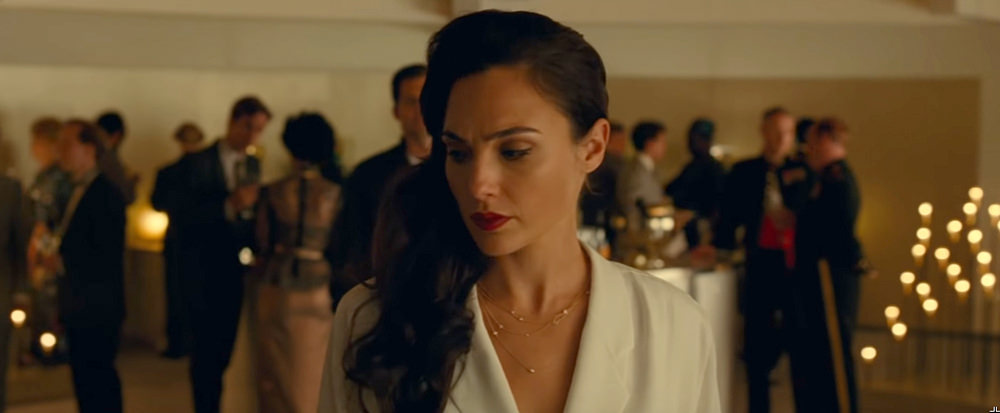
But look, there’s no denying this film is great fun during long stretches. While the opening scenes during the Amazonian Olympics suffered a bit from some surprisingly dicey visual effects work (as did the final battle scene between Diana and Barbara, which looked like two weightless rag dolls crashing into each other), there are some fabulous action sequences (not nearly enough, though) and moments of true, stirring, heart-in-the-throat triumph. Wonder Woman 1984 is at its best when delivering these moments of grandeur, heroism and heart, but the film suffers from an underwhelming script and story.
Oh, and old-school Wonder Woman fans need to stay for the post-credits scene, although if you’re really eagle-eyed, you’ll have seen what’s coming much earlier in the film.
[Photo Credit: Warner Bros. ]
WERQ From Home: “Mank” Star Lily Collins in Celine Next Post:
Pop Style Opinionfest: T Lo’s Holiday Entertainment Guide
Please review our Community Guidelines before posting a comment. Thank you!

